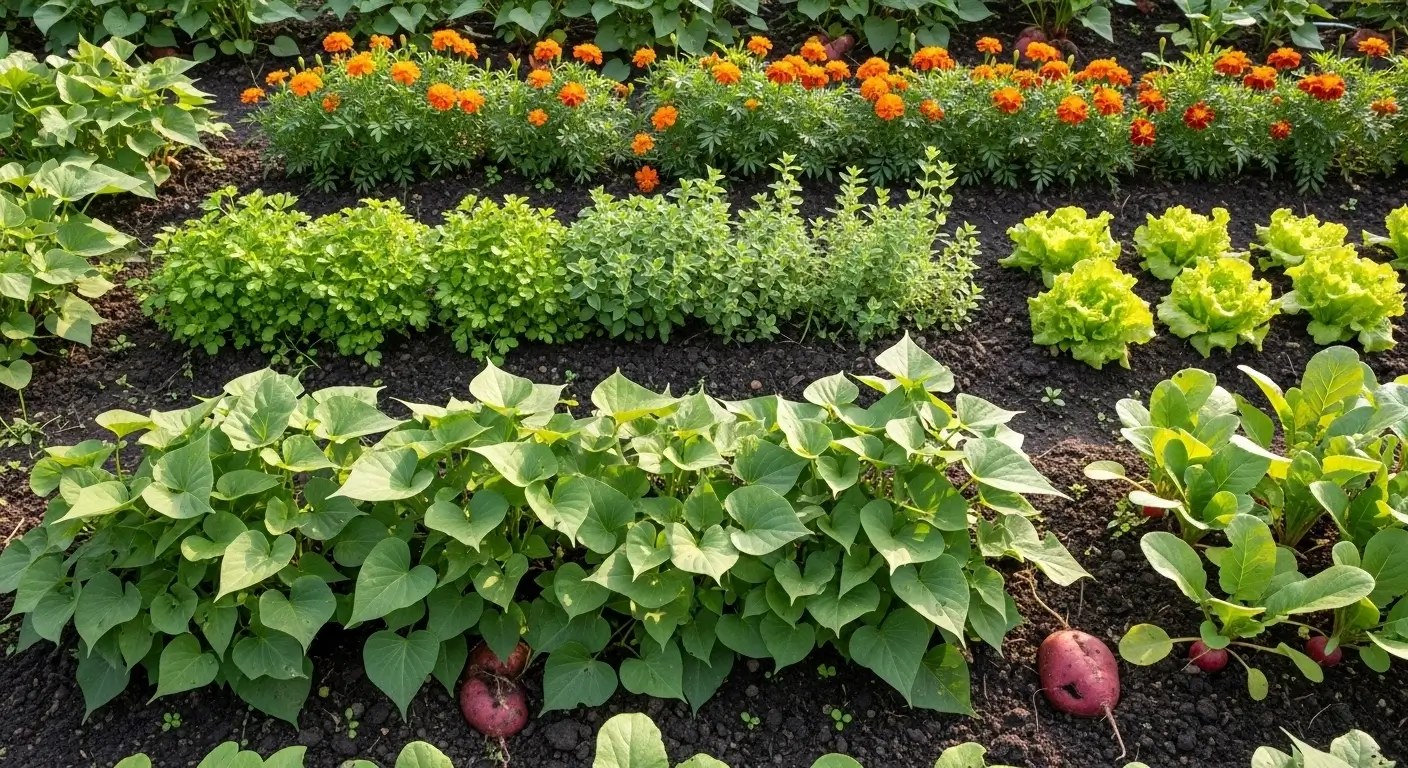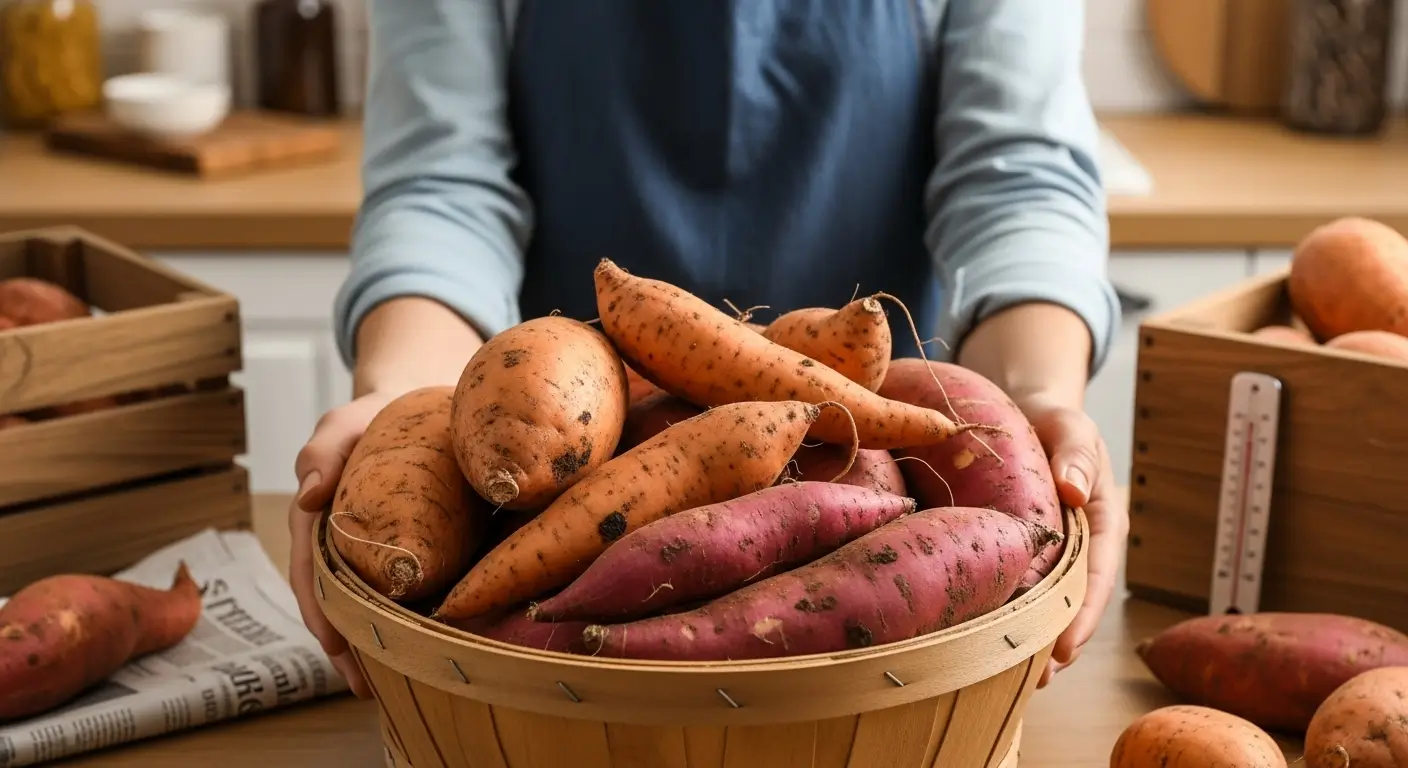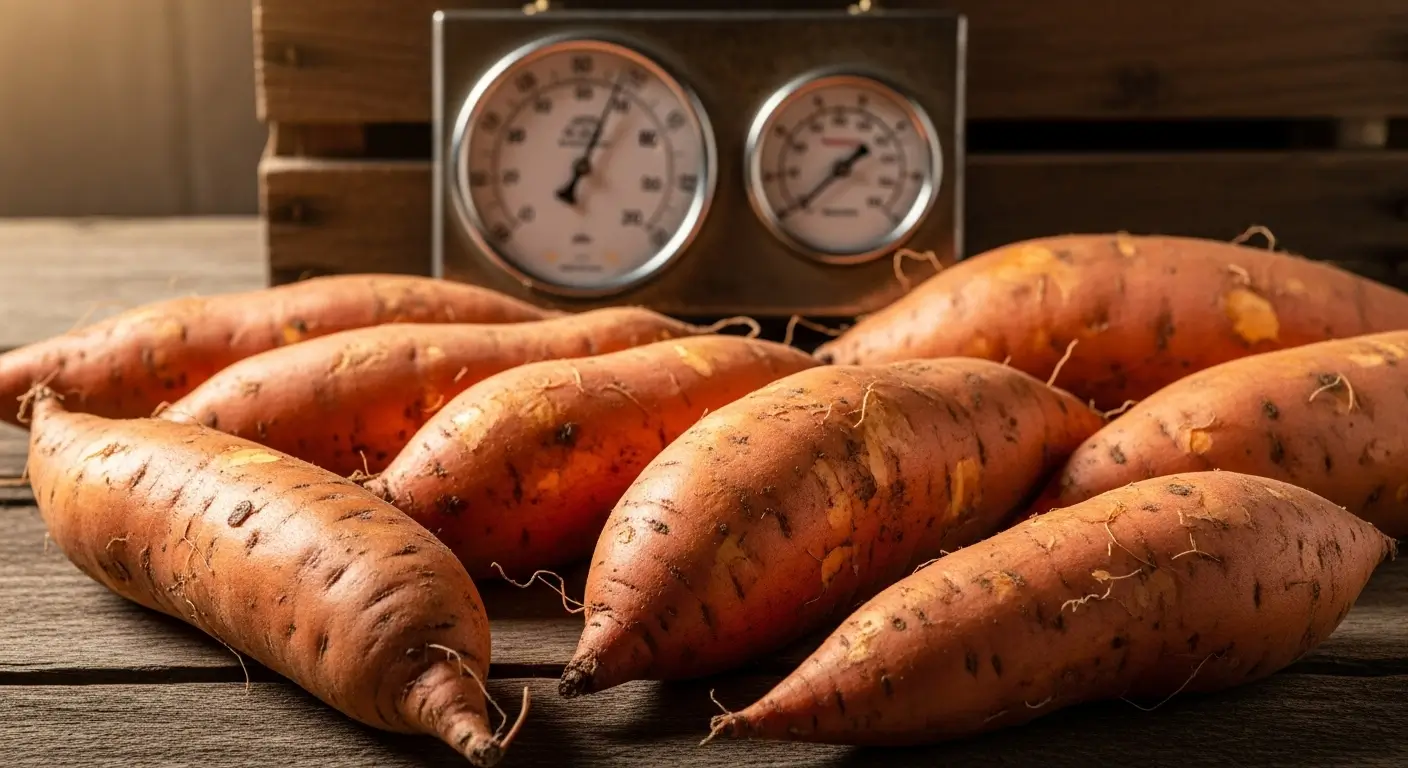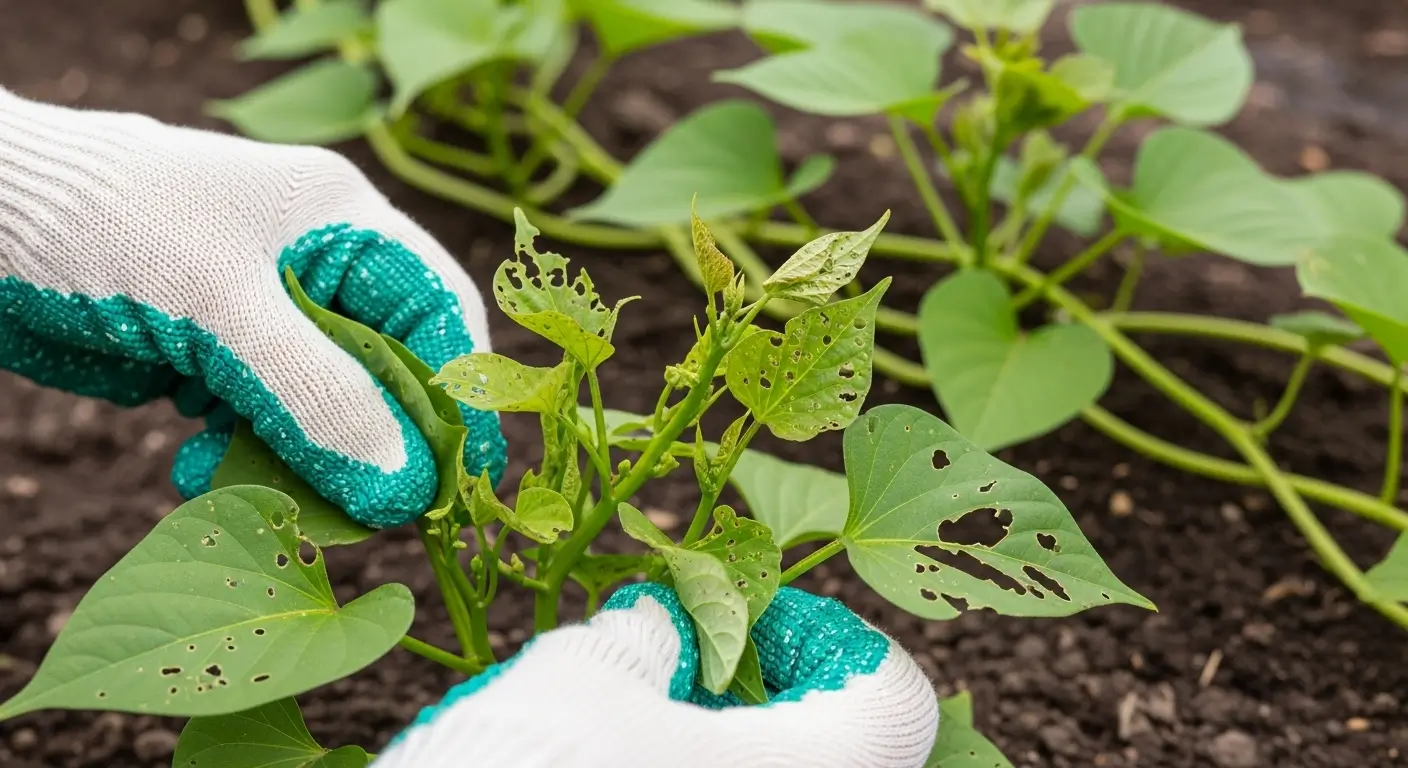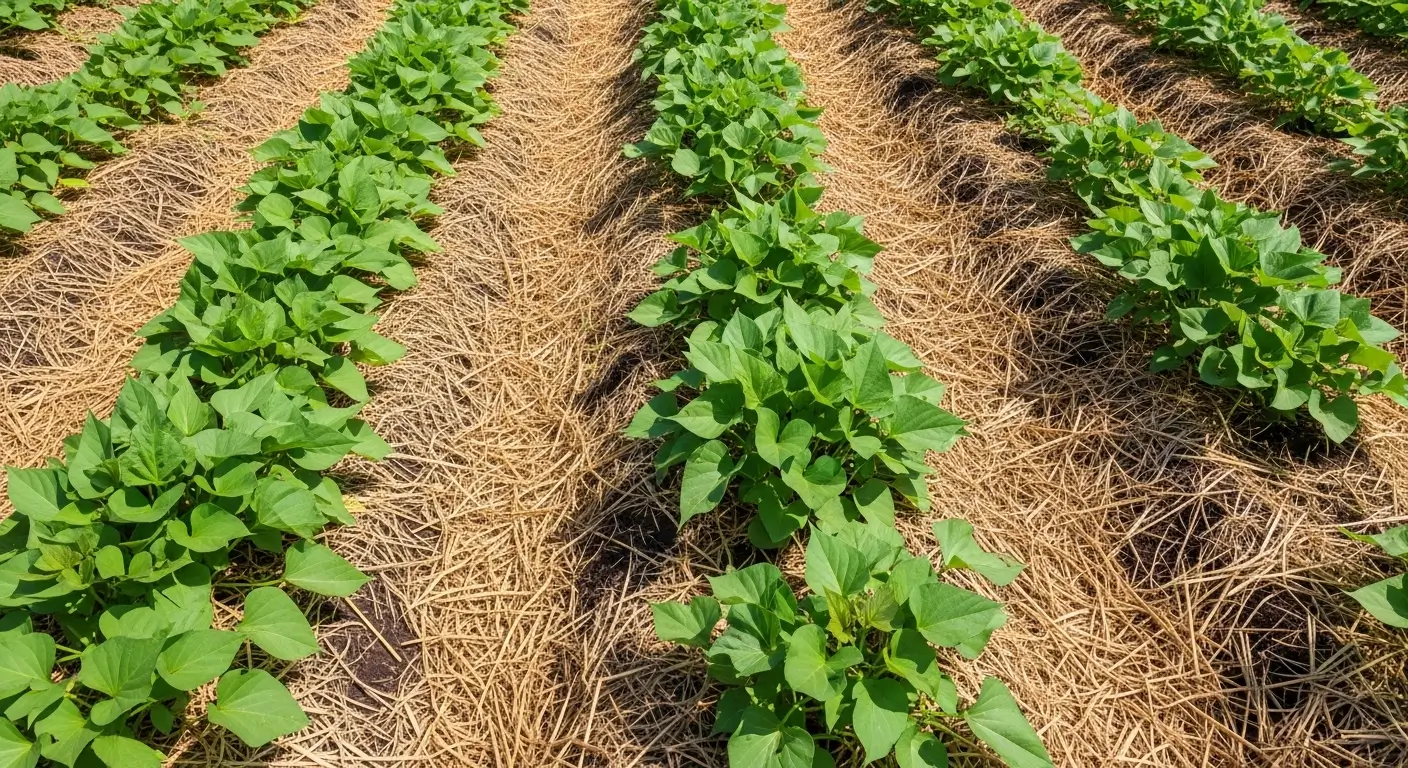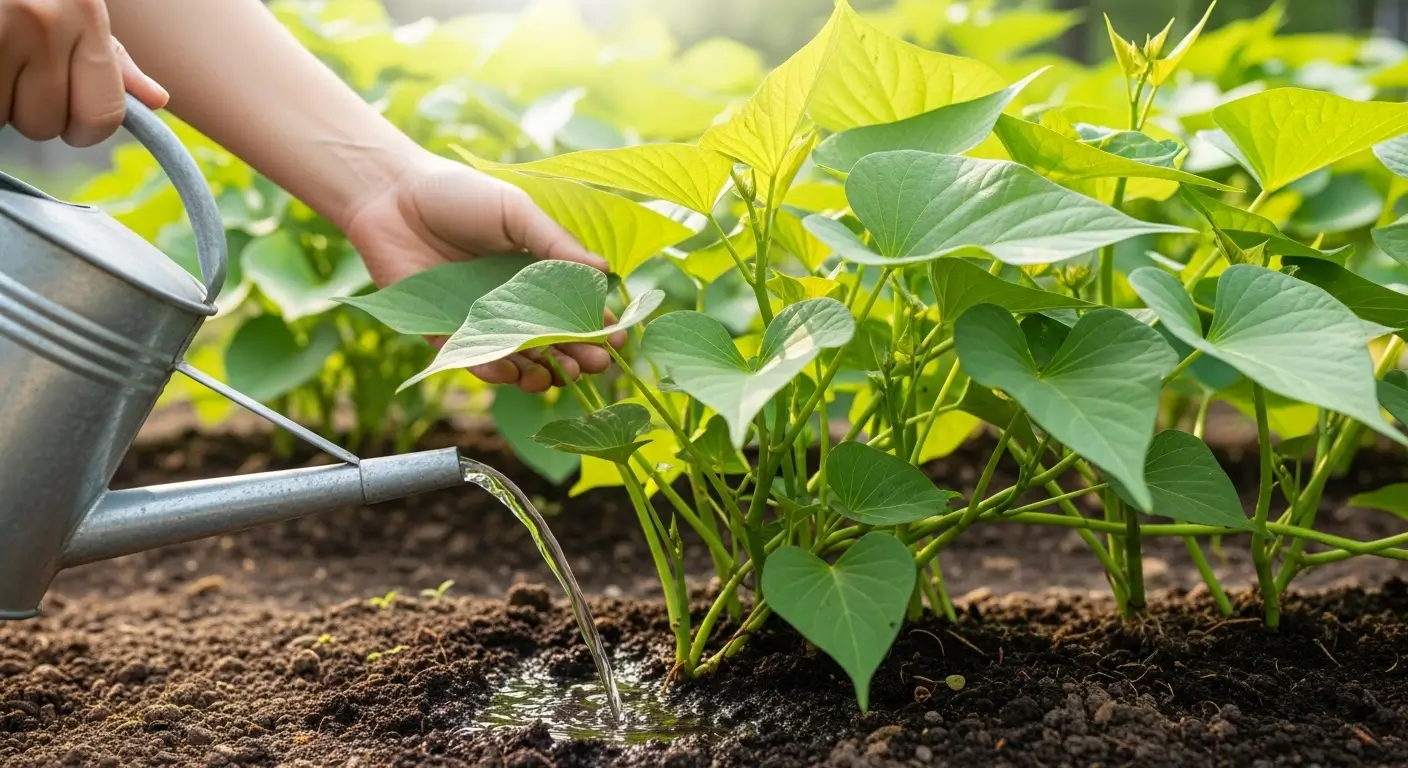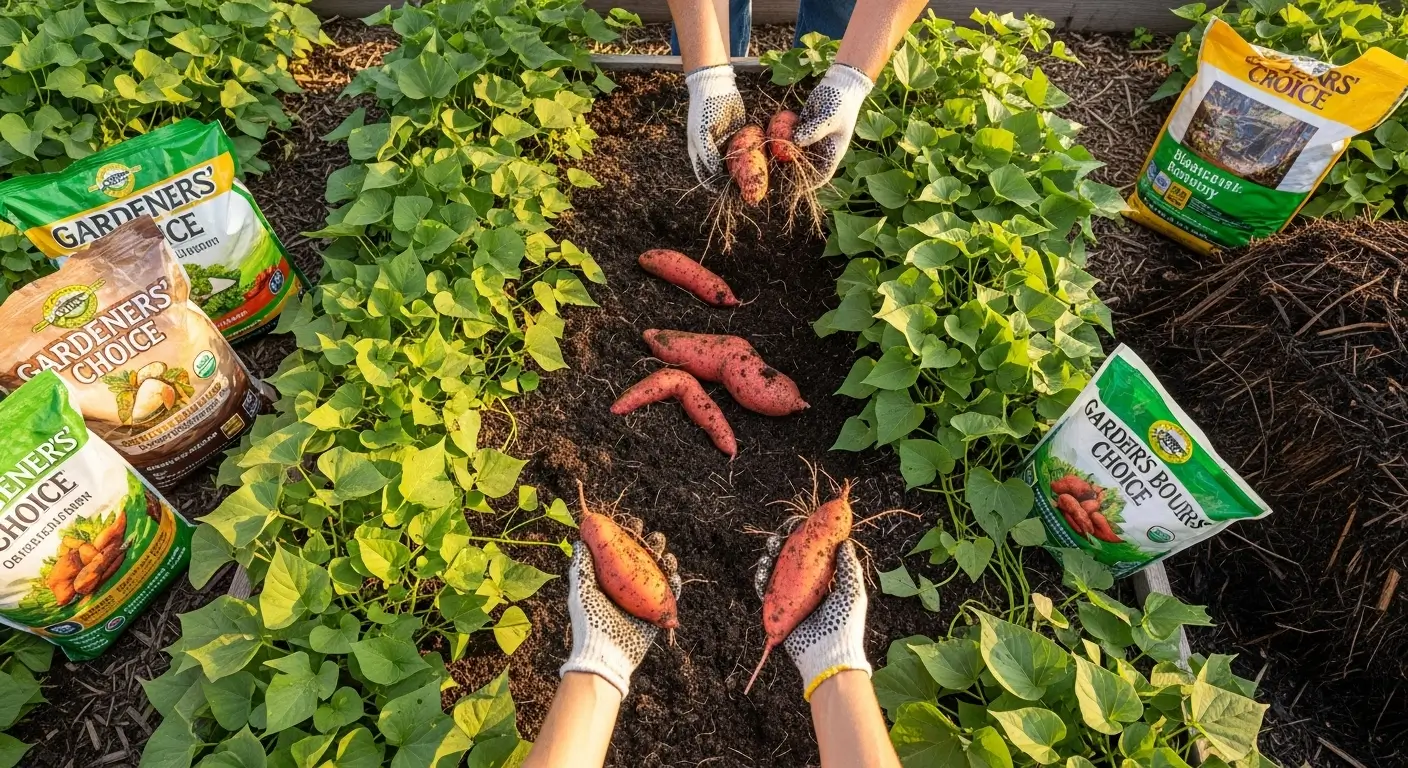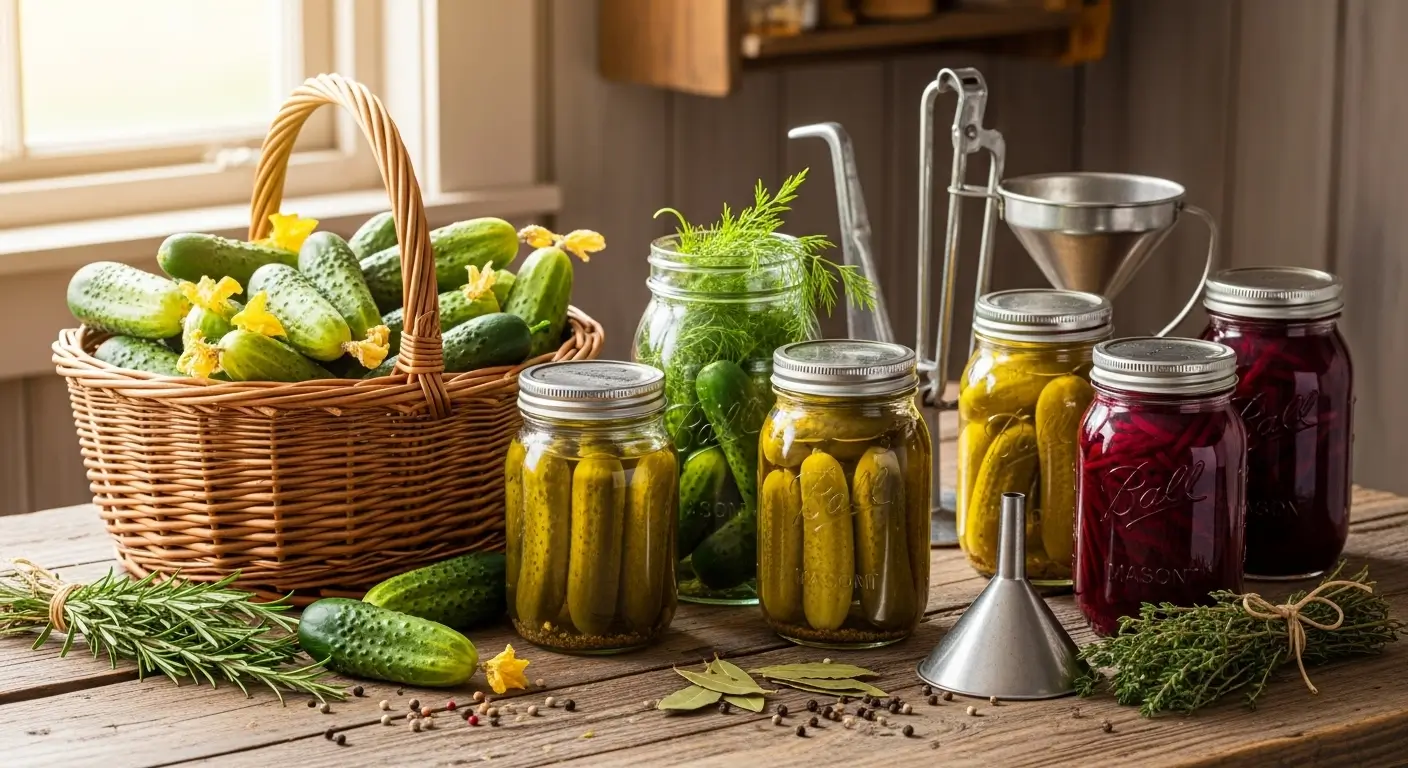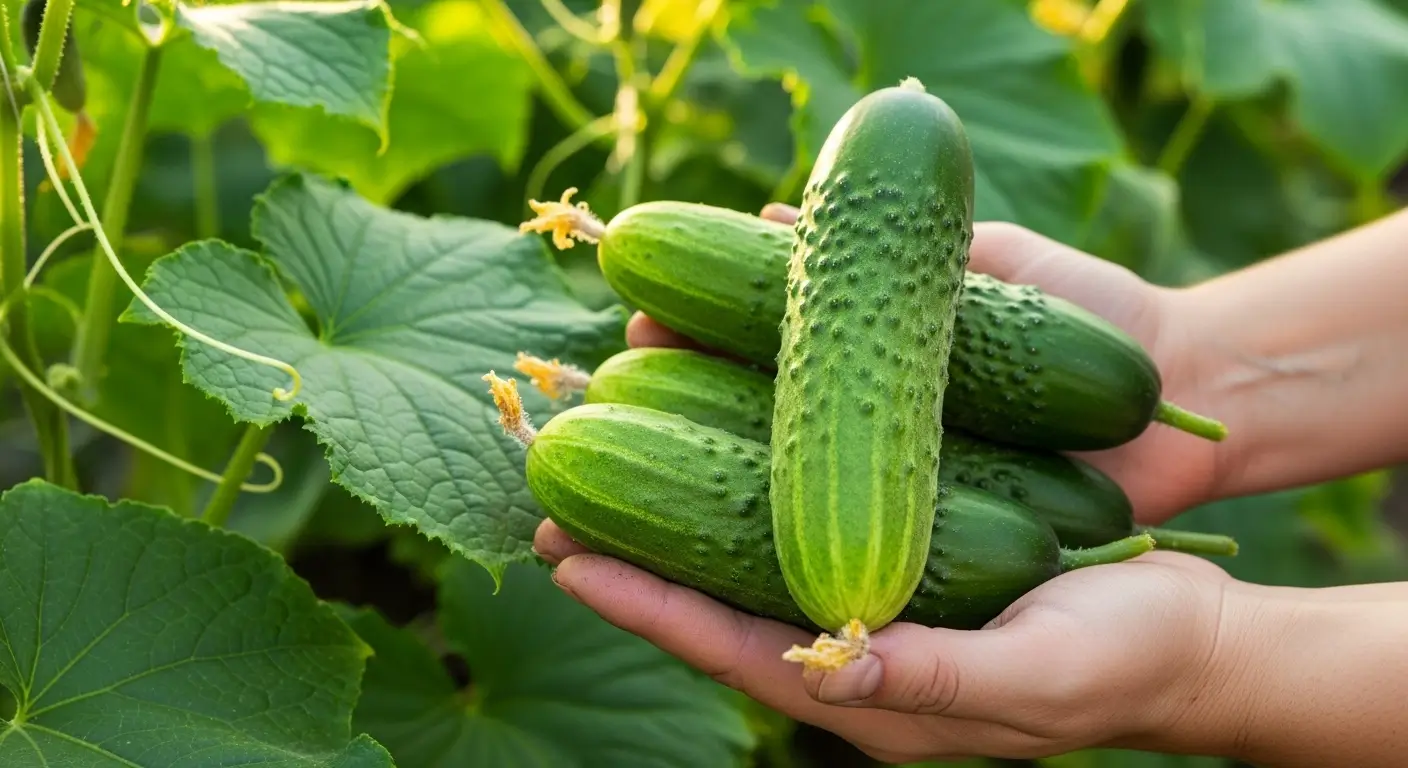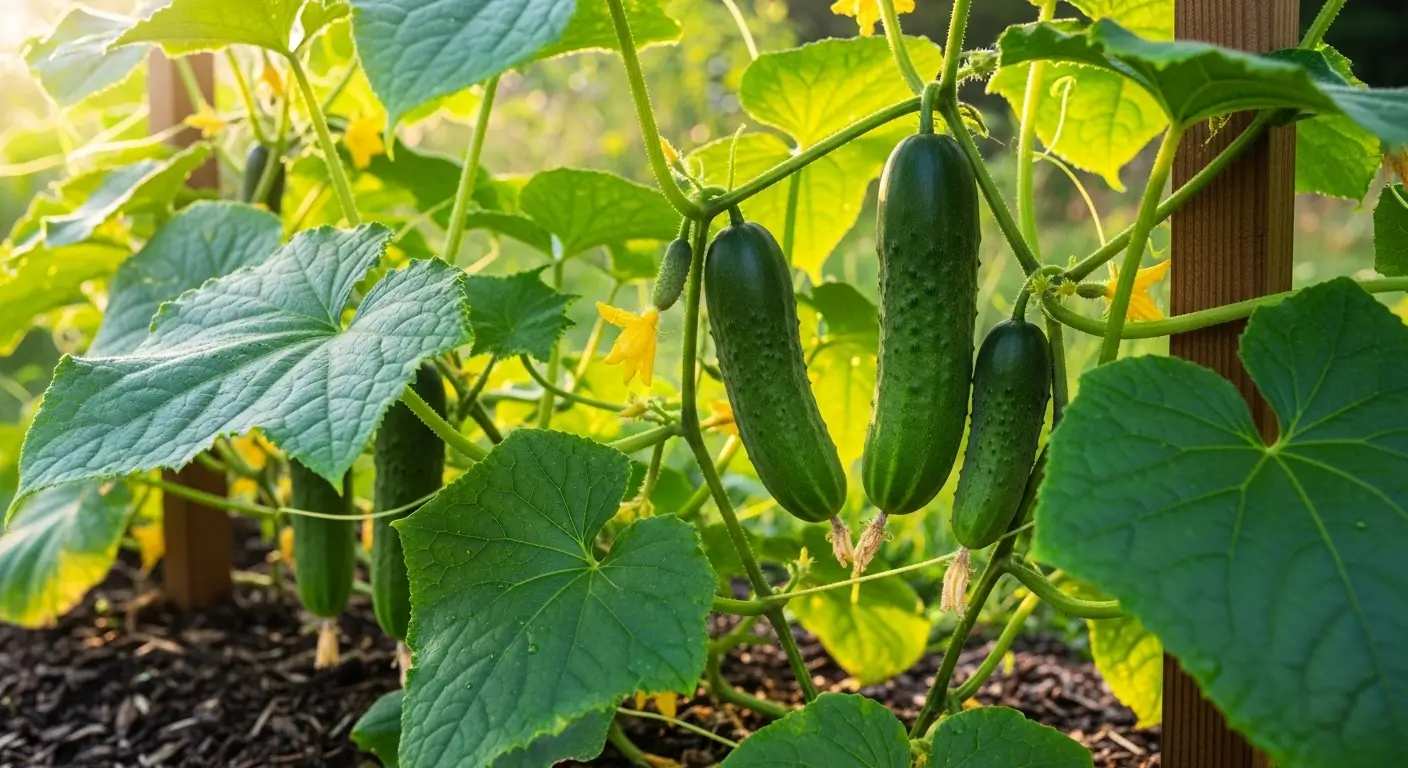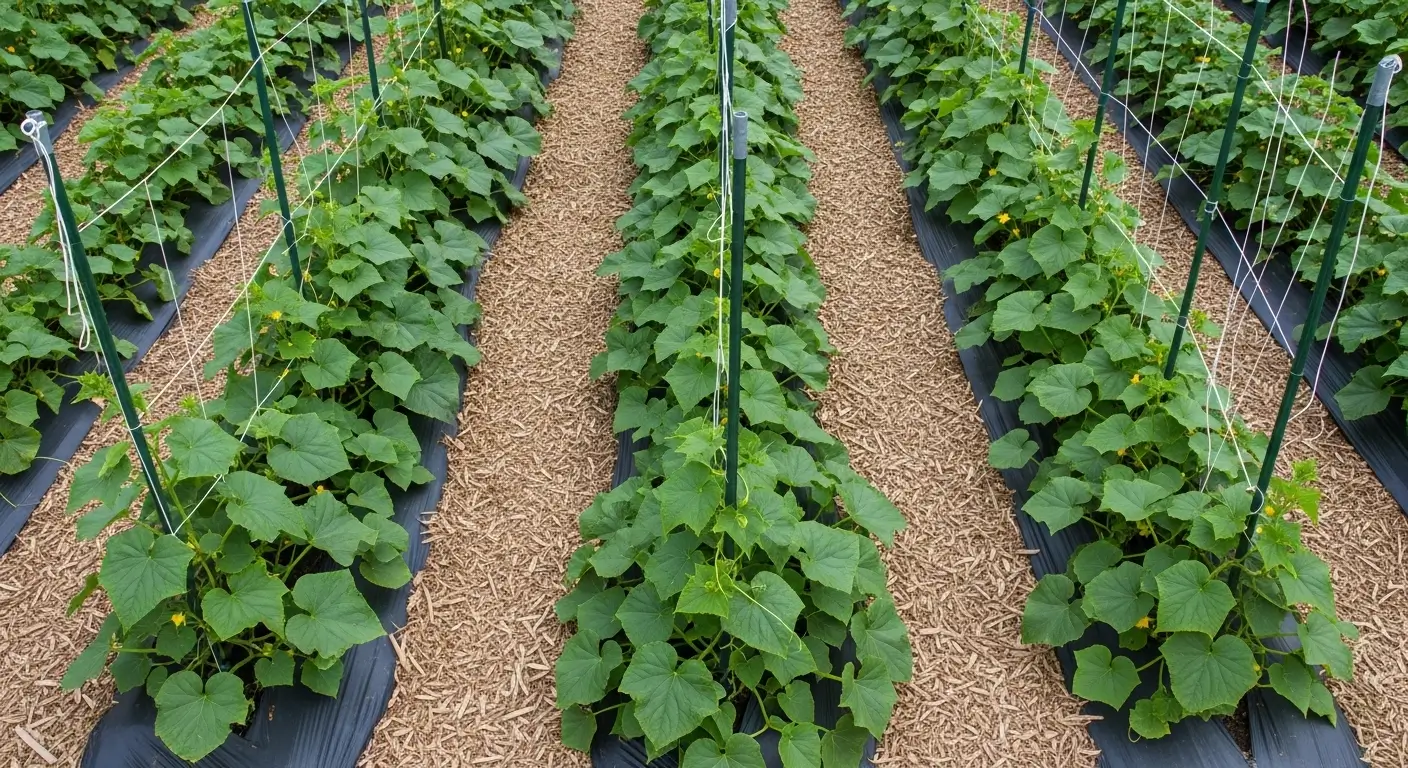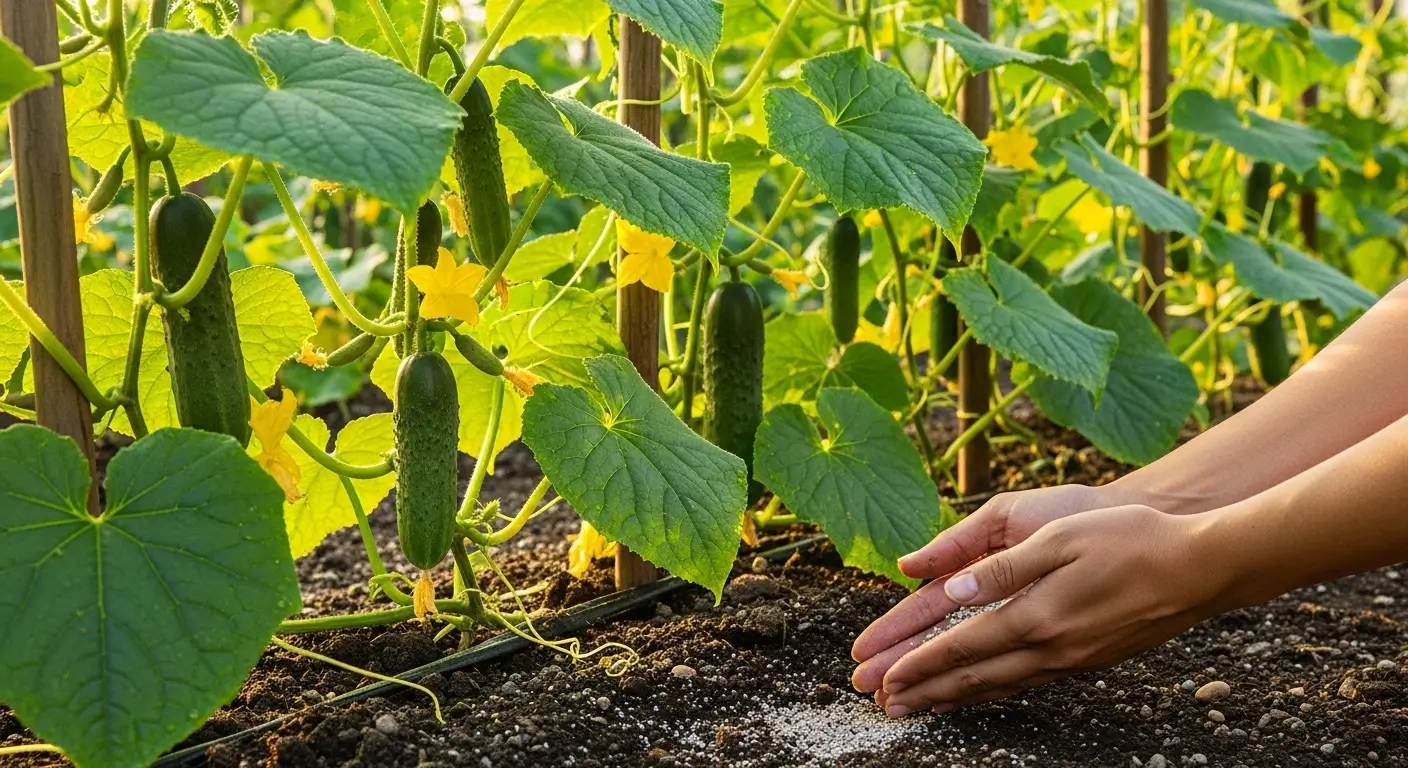You know that moment when you’re digging up sweet potatoes in the fall and find this massive, perfect tuber hiding under all those sprawling vines? Yeah, that’s basically garden gold right there. But here’s what I’ve figured out after years of growing these beauties – they’re so much better when they’ve got the right plant buddies hanging out nearby.
My grandma always said plants are like people – they need good neighbors to thrive. And honestly? She wasn’t wrong. Sweet potato companion plants aren’t just some fancy gardening trend. They actually work, and I’ve got the harvests to prove it.
I’ll be honest with you – I used to think companion planting was bogus. Like, come on, do plants really care who they’re sitting next to? But after a decade of trial and error (emphasis on the error part), I’m totally sold on the whole thing. My sweet potato patches are basically little plant communities now, and everyone’s happier for it.
Table of Contents
Why Companion Planting with Sweet Potatoes Actually Works
Okay, here’s the deal with sweet potatoes – they’re pretty chill neighbors. Those sprawling vines act like nature’s own mulch, keeping weeds down and soil moist. Plus, they don’t hog all the nitrogen like some plants do (looking at you, tomatoes).
The thing about what to plant with sweet potatoes is that these guys have their own quirks. They spread horizontally like they own the place, but they’re not jerks about it. They actually help improve your soil while they’re at it. It’s like having that friend who cleans up while they’re visiting – rare, but awesome.
What really sold me on companion planting was watching how different plants just… worked together. Some combinations were magic, others were total disasters. Trust me, I’ve learned which is which the hard way.
The Best Sweet Potato Companion Plants for Your Garden
Beans: The Nitrogen-Fixing Powerhouse
Oh man, beans and sweet potatoes are like the best friendship ever. I always plant pole beans around the edges of my sweet potato beds now, and it’s honestly one of my favorite combos.
Here’s why it’s brilliant – beans grow up, sweet potatoes spread out. They’re basically sharing space without getting in each other’s way. And get this – beans actually put nitrogen back into the soil, which sweet potatoes love (but not too much, they’re not greedy).
I’ve tried bush beans and pole beans, which work great. If you’ve got trellises, go with pole beans like Kentucky Wonder. If not, bush beans are excellent and way less work to set up.
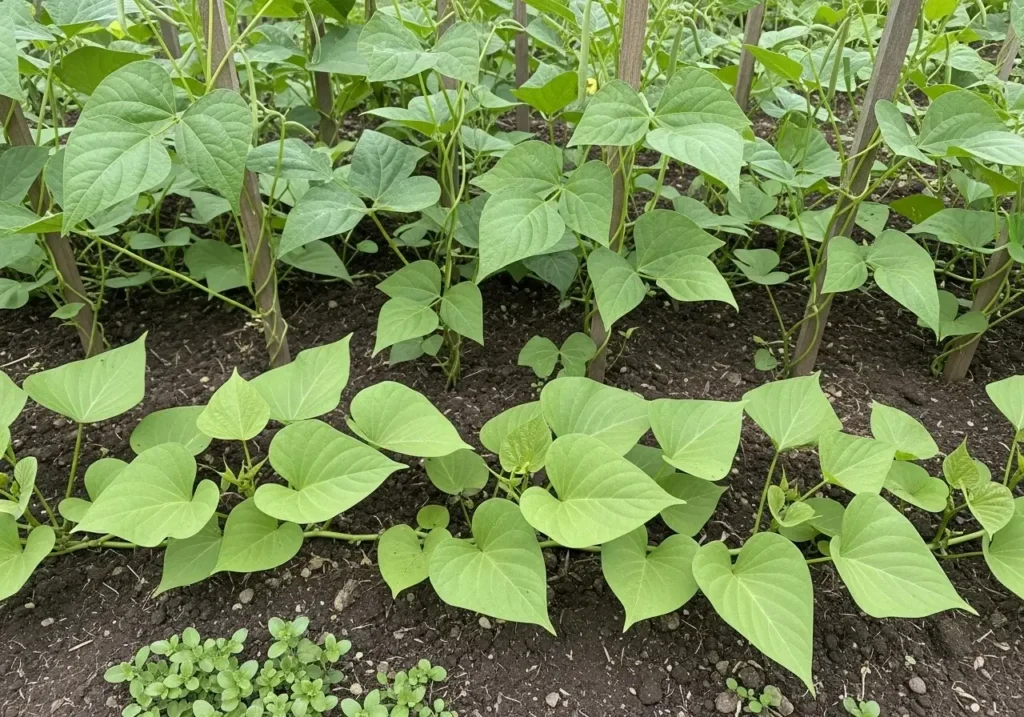
Parsley: The Pest-Fighting Herb
This one’s gonna sound weird, but parsley is like having a tiny bouncer for your sweet potatoes. Those annoying sweet potato weevils? They hate the smell of parsley. I learned this from another gardener who swore by it, and honestly, I was skeptical.
But three years later, I barely see any pest damage compared to my pre-parsley days. Plus, you get fresh herbs all season, which is never bad. I plant it around the edges or scatter it throughout – whatever works for your space.
Oregano and Other Mediterranean Herbs
Mediterranean herbs are fantastic sweet potato plant partners, and here’s why I love them – they grow up instead of out, so they’re not fighting for the same real estate. Plus, they smell amazing and confuse pests with their strong scents.
I plant little oregano, thyme, and marjoram clusters throughout my sweet potato beds. It looks pretty, smells great, and makes harvesting way easier because you’ve got these little herb landmarks to navigate by. Win-win-win.
Spinach and Lettuce: Cool-Season Companions
This is one of those timing tricks that makes you feel like a gardening genius. Plant spinach and lettuce early in your sweet potato beds, and by the time those vines really start taking over (usually around mid-June for me), you’ll have already harvested your greens.
It’s like getting two crops from the same space without any drama. I usually get two full spinach harvests before the sweet potatoes, which need all that room. Pretty sweet deal, right?
Radishes: The Space-Efficient Choice
Radishes are the easiest thing to grow with sweet potatoes. They’re done in about a month, so they’re outta there before the sweet potato vines even know what hit them. Plus, their little taproots help break up hard soil, which your sweet potatoes will thank you for later.
I scatter radish seeds around after planting my sweet potato slips. It’s like getting a bonus crop for basically no extra work. Can’t argue with that logic.
Plants to Avoid Near Sweet Potatoes
Alright, time for some real talk about what NOT to plant with sweet potatoes. I learned most of these lessons hard, so you won’t have to.
Tomatoes: The Resource Competition Problem
Oh boy, this was a disaster waiting to happen. In year two of my serious gardening phase, I thought, “Hey, both plants like warm weather, so this’ll be great!” Spoiler alert: it wasn’t.
It turns out tomatoes and sweet potatoes are both needy, but in different ways. Tomatoes want tons of nitrogen, sweet potatoes prefer less nitrogen and more of the other stuff. So they’re basically fighting over resources like siblings in the backseat of a car. Nobody wins.
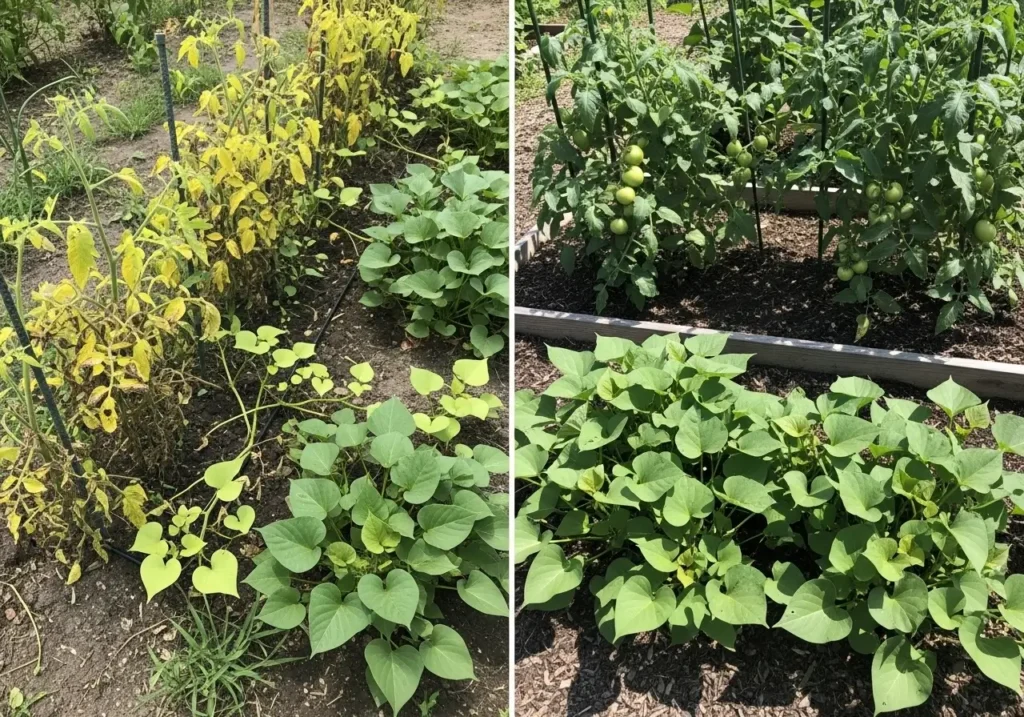
Sunflowers: The Allelopathic Issue
This one blew my mind when I found out about it. Sunflowers actually release chemicals that tell sweet potatoes to back off. I’d noticed my sweet potato vines always looked sad near my sunflowers, but I didn’t connect the dots until someone explained the science.
Now I keep my sunflowers in their own little corner, and everybody’s much happier. Who knew plants could be so passive-aggressive?
Squash and Other Sprawling Vines
You’d think sprawling plants would get along, right? Wrong. So very wrong. I tried growing squash with sweet potatoes once, and it was like a wrestling match between vines. I spent half the summer trying to figure out which plant was which!
Lesson learned: just because plants have similar growth habits doesn’t mean they’re compatible roommates.
Plants to Avoid Planting Near Sweet Potatoes: The Root Competition Issue
Anything with shallow, aggressive roots is bad news for sweet potatoes. Think grasses, mint (which should be in jail anyway – I mean, containers), and other thuggish plants that muscle their way around the root zone.
These plants steal water and nutrients from the same soil layer where sweet potatoes are trying to do their thing. It isn’t lovely, honestly.
Creating the Perfect Sweet Potato Companion Garden Layout
After years of experimenting (and some spectacular failures), here’s what actually works in my garden:
Start with your sweet potato slips spaced about 12-18 inches apart – check out my types of sweet potatoes guide if you’re not sure about spacing for your variety. Then plant your pest-fighting herbs like parsley and oregano around the edges.
Early in the season, while those sweet potato vines are still babies, go crazy with quick crops like radishes, lettuce, and spinach. As you harvest those, the sweet potato vines naturally take over the space. It’s like a perfectly choreographed plant dance.
If you’re doing raised beds (which I totally recommend – here’s my complete raised bed guide), use that vertical space for pole beans or other climbers. More food, same footprint.
Advanced Companion Planting Strategies
The Three Sisters Method, Sweet Potato Style
I’ve totally nerded out and adapted the classic Three Sisters method for sweet potatoes. Instead of corn, beans, and squash, I do sweet potatoes, pole beans, and whatever seasonal plant makes sense. Spring might be lettuce, summer could be small tomatoes (far enough apart to avoid drama).
It’s like the Three Sisters went to college and got more sophisticated.
Beneficial Insect Attractors
Planting flowers that bring in the good bugs has been a game-changer for pest control. Marigolds, nasturtiums, and alyssum don’t compete with sweet potatoes; they’re like hiring a natural pest control service.
Plus, your garden looks way prettier. Always a bonus.
Seasonal Timing and Succession Planning
The secret sauce to companion planting with sweet potatoes is all about timing. Clemson University recommends waiting until soil temperature reaches 65°F consistently before planting sweet potato slips, and they come out before the first frost kills them.
Early season (May-June): Plant your quick growers like radishes and lettuce alongside those tiny sweet potato slips.
Mid-season (July-August): Sweet potato vines are going nuts now, and your herb bodyguards are earning their keep.
Late season (September-October): Harvest time approaches, vines start dying back, and you can start planning what goes in that bed next.
Real-World Success Stories and Lessons Learned
Last season, I tried this intensive companion planting thing in one of my 4×8 raised beds. Sweet potato slips down the middle, herbs around the edges, succession planted, and everything else.
The results were incredible – over 20 pounds of sweet potatoes from that tiny space, plus continuous harvests of radishes, lettuce, and herbs all season. Pest damage was zero thanks to those herb bodyguards, and the soil got better over the season.
But I’ve had epic fails, too. The year I tried sweet potatoes with cucumbers was… let’s say it looked like a plant tornado hit my garden. Both crops suffered, and I learned that not all sprawling plants play nice together.
Troubleshooting Common Companion Planting Problems
If your companion plants look sad:
- Check if they’re fighting over water (root competition is real)
- Make sure you’re not cramming too much stuff together
- Heavy feeders don’t like sharing resources
- Some plants are just natural enemies
If your sweet potatoes aren’t happy with their neighbors:
- They might be getting too much nitrogen from bean buddies
- Companions could be creating too much shade
- Check that the companions aren’t attracting pests that bug sweet potatoes, too
Key Takeaways for Sweet Potato Companion Success
Here’s what really matters after all my years of trial and error:
- Mix up your growth styles: Tall plants with sprawling ones work great
- Time everything right: Succession planting is your best friend
- Let herbs handle pest control: They’re way better at it than you are
- Don’t make plants compete: Heavy feeders need their space
- Plan for full-grown plants: That tiny seedling won’t stay tiny
Companion planting has totally changed how I think about garden design. It’s not just about cramming more stuff into less space – it’s about creating these little plant communities where everyone helps everyone else out.
For the full scoop on growing amazing sweet potatoes, including all the soil prep and harvest timing stuff, definitely check out my complete sweet potato growing guide.
What companions have worked best in your sweet potato patch? I’m always looking for new ideas, and I love hearing about other people’s garden disasters too – they make me feel less alone in my plant parenting struggles! Please drop a comment and let’s swap stories. Happy growing!
